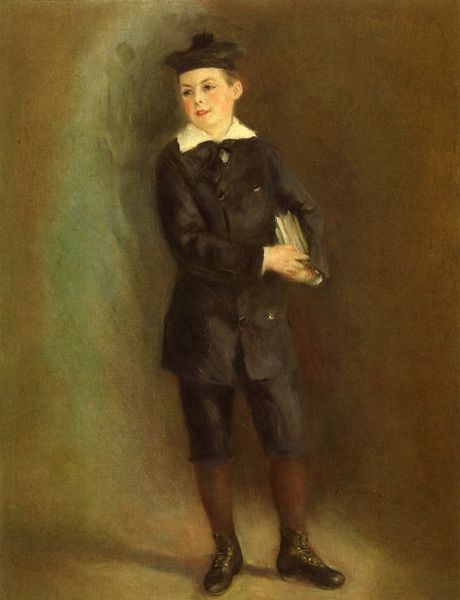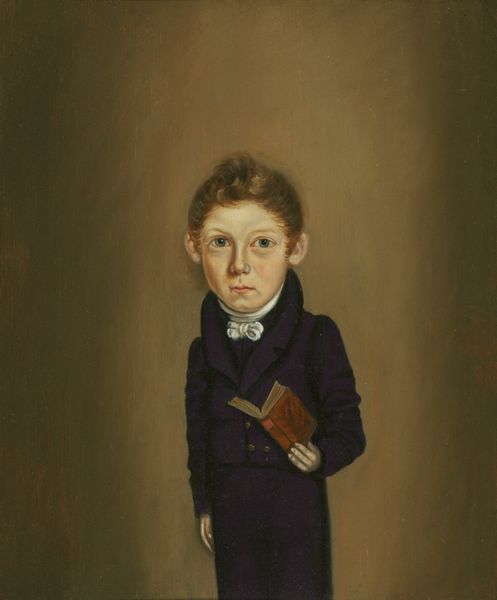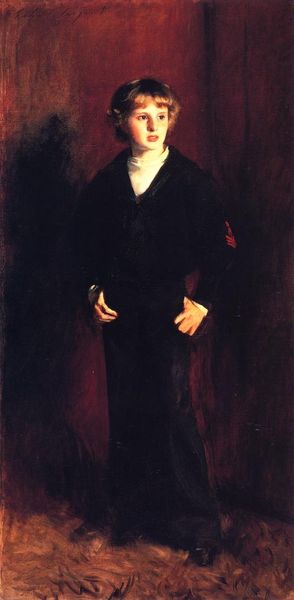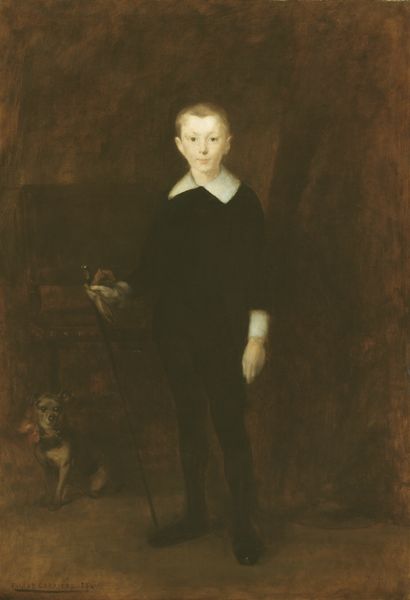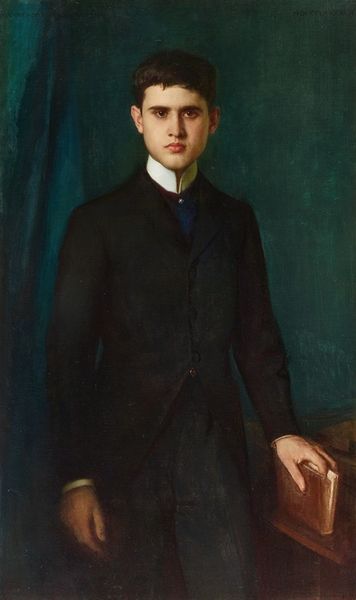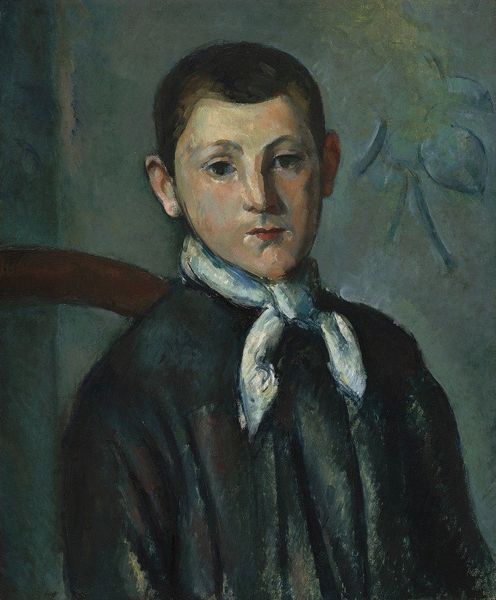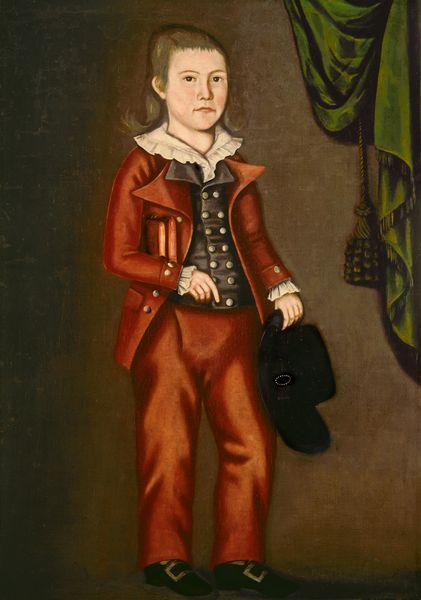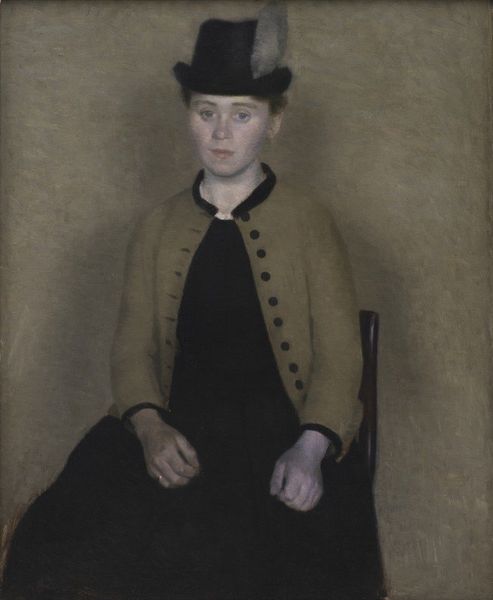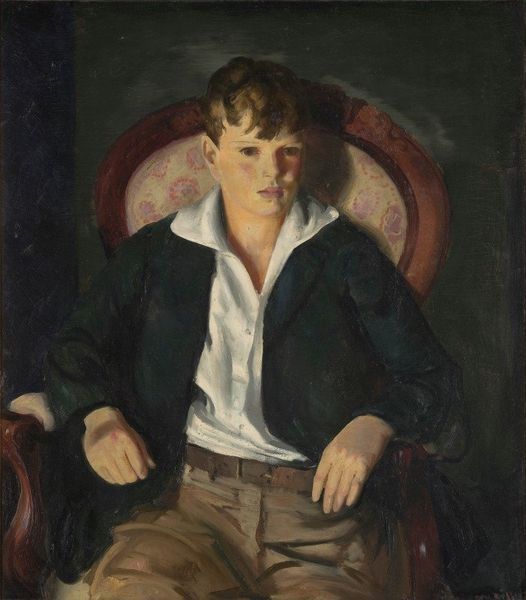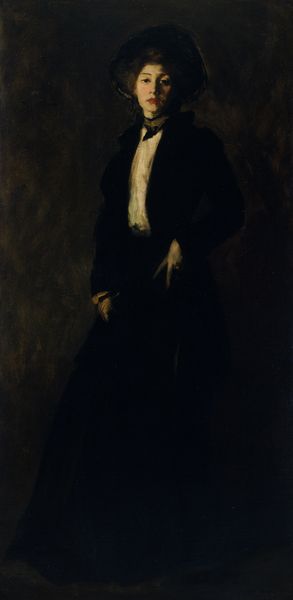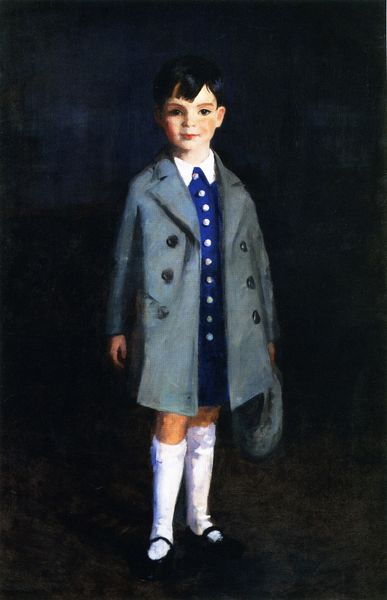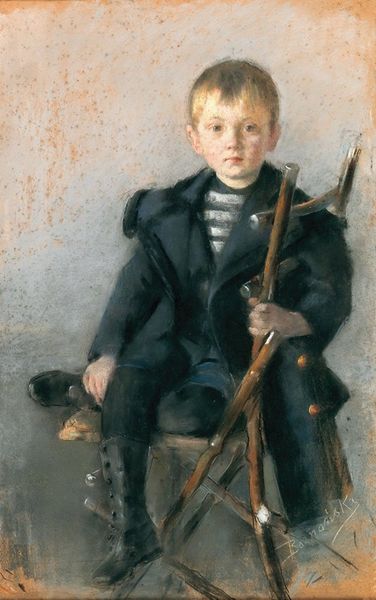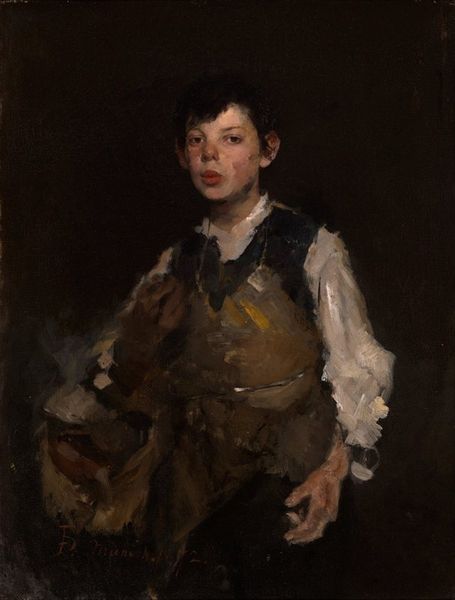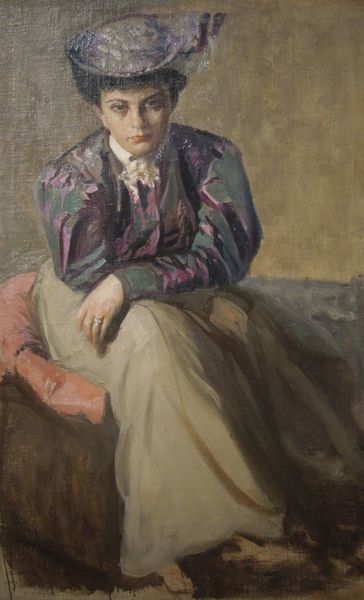
painting, oil-paint
#
portrait
#
painting
#
oil-paint
#
academic-art
#
realism
Dimensions: 59 3/4 x 37 3/4 in. (151.8 x 95.9 cm)
Copyright: Public Domain
Curator: Stepping into gallery 21, we find ourselves face to face with "Alexander Stewart Wetherill," an oil painting created sometime between 1887 and 1900. Editor: He looks rather somber, doesn't he? A bit… stiff, like a carefully arranged stage set. But his gaze, that’s quite direct. He sees you. Curator: Precisely. Observe the meticulous rendering of the sailor suit, its texture and detailing suggesting a clear adherence to realism. Note, also, how the dark palette contrasts with the boy’s fair skin and the bright white of his collar. The formal composition creates a strong sense of verticality. Editor: Verticality indeed! It's almost as if the artist aimed to make him seem older, grander. Funny how clothing can do that, sort of build a person from the outside in. He looks uncomfortable in it, like he is trapped inside. I wonder if little Alexander picked it out himself. I wonder if the artist even asked him how he felt! Curator: Consider how the inclusion of the chair as a prop functions symbolically. The sitter is connected not merely to a background, but an object which invites consideration of status and the art of portraiture. We also must remember this was created during a time of transition in the art world, with realism transitioning towards more experimental and interpretive representations. Editor: Mmm, transition...that almost explains it. I feel it, too. A tug between stuffy tradition and a more soulful need for real, raw expression. It's almost as if the artist tried to infuse a child's delicate vulnerability with the stern face the establishment wanted. Poor kiddo. Curator: Such paintings afford unique opportunities for understanding societal conventions and the semiotics of status during that period. We note here, again, the importance of formal attire, along with restrained pose and countenance. Editor: What fascinates me most is the tension bubbling beneath all the correctness. A little rebellion fighting for its chance. It is interesting that painting became so focused on showing all emotions on faces right after pieces like this were made and the artistic standards were challenged! Curator: The interplay of signifiers, visual tropes, and structural elements enables a complex reading of turn-of-the-century social mores. Editor: And the portrait? More than a simple painting—it’s an insight, and insight tinged with sadness and challenge, into what that particular boy, in those very particular clothes, and within his constraints, could see back in his day! Thanks for illuminating it for us.
Comments
No comments
Be the first to comment and join the conversation on the ultimate creative platform.
